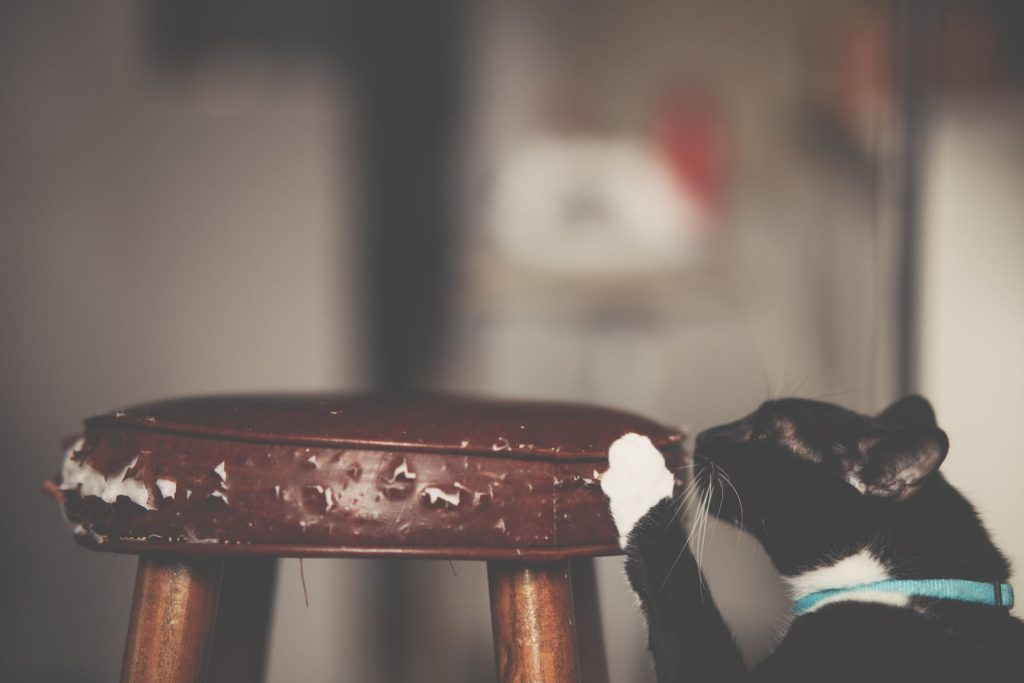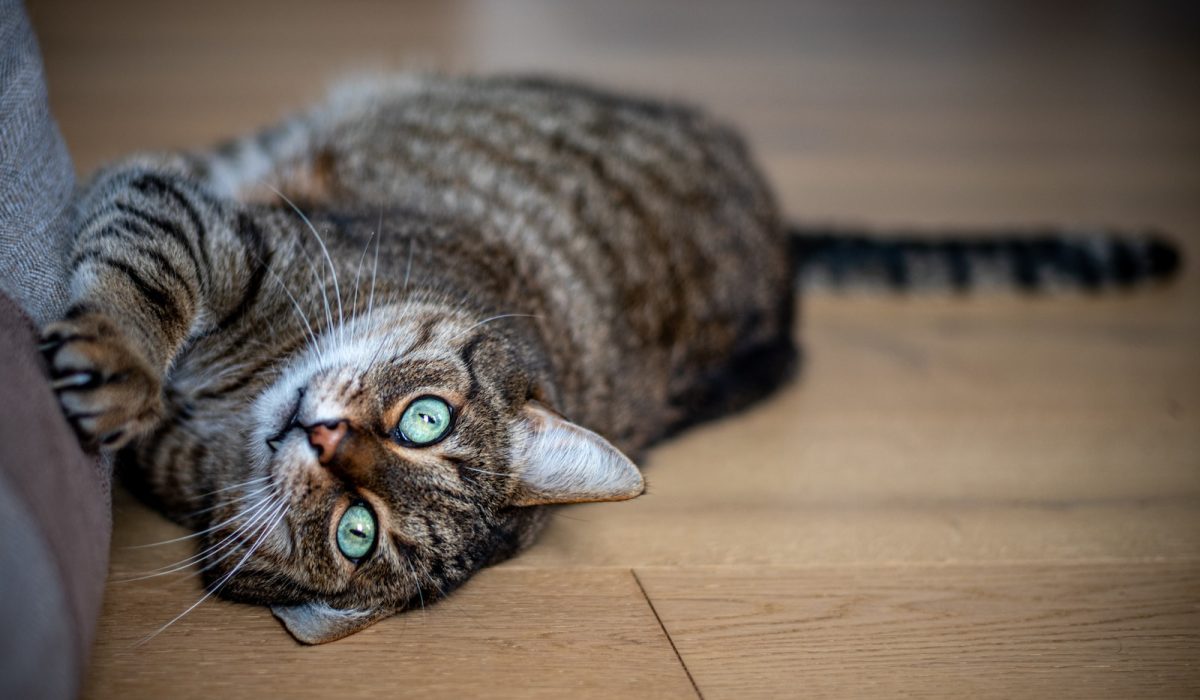Scratching is a natural behavior for cats, but it can lead to damaged furniture and frustration for pet owners. Understanding why cats scratch and how to redirect this behavior is key to protecting your furniture. This guide, focused on “How To Stop A Cat From Scratching Furniture,” offers effective strategies to address this common issue.
Understanding Why Cats Scratch Furniture
- Natural Behavior: Cats scratch to remove the outer layer of their claws, revealing sharp new growth underneath.
- Exercise and Stretching: Scratching provides a full-body workout, stretching and strengthening their muscles.
- Territorial Marking: Cats leave both a visual mark and a scent from glands in their paws to mark their territory.
- Attention-Seeking: Sometimes, cats scratch to get their owner’s attention, especially if it has resulted in a reaction before.

Strategies to Redirect Scratching
- Provide Alternative Scratching Surfaces: Introduce scratching posts or boards made of appealing materials like sisal, heavy-duty cardboard, or wood bark. Place these near the furniture they usually scratch.
- Choose the Right Scratching Post: Consider the location, height, and texture of the surfaces your cat prefers to scratch. Some cats prefer vertical surfaces, while others like horizontal ones.
- Encourage Use of Scratching Posts: Attract your cat to new scratching posts using catnip, toys, or dangling string games. Ensure the posts are stable and don’t wobble.
- Use Feliway® FELISCRATCH: This synthetic pheromone can make the scratching post smell familiar and attractive to your cat.
- Deterrents for Unwanted Scratching: Apply low-tack double-sided tape or commercial scratching deterrents to furniture. These provide an unpleasant texture that discourages scratching.
- Clean Damaged Areas: Remove the pheromone scent from previously scratched areas to discourage further scratching.
- Consult a Behavior Specialist: If scratching is excessive or anxiety-related, seek advice from a veterinarian or a cat behavior specialist.

Preventing Furniture Damage
- Protective Measures: Use furniture protectors or scratch guards on your furniture.
- Address Anxiety: If the scratching is due to anxiety, identify and address the underlying cause.
Training and Positive Reinforcement
- Reward Good Behavior: Whenever your cat uses the scratching post, reward them with treats, praise, or affection. This positive reinforcement encourages them to repeat the behavior.
- Consistency is Key: Consistently guide your cat towards the scratching post and gently discourage them from scratching furniture. Over time, they will learn the preferred places to scratch.
Environmental Enrichment
- Interactive Toys: Provide a variety of toys to keep your cat entertained and engaged. This can reduce boredom, a common reason for unwanted scratching.
- Playtime: Regular play sessions with your cat can help expend energy that might otherwise be directed towards scratching furniture.

Understanding Your Cat’s Preferences
- Observe Scratching Patterns: Pay attention to where, when, and how your cat likes to scratch. This can help you choose the most appealing type of scratching post.
- Multiple Scratching Options: In multi-cat households, or for cats with diverse scratching preferences, provide different types of scratching posts and surfaces.
Long-Term Solutions
- Regular Nail Trimming: Keeping your cat’s nails trimmed can minimize the damage caused by scratching.
- Furniture Layout: Sometimes, rearranging furniture or blocking access to certain areas can discourage scratching.
When to Seek Further Help
- Persistent Issues: If your cat continues to scratch furniture despite trying these strategies, consider consulting with a veterinarian or a feline behaviorist for additional advice.
Preventing a cat from scratching furniture involves understanding their natural behavior and providing appropriate alternatives. With patience and the right strategies, you can protect your furniture while allowing your cat to express its natural instincts. Remember, never punish your cat for scratching, as it is a natural behavior. Instead, focus on redirection and positive reinforcement.
FAQs on How to Stop a Cat from Scratching Furniture
Q1: Why do cats scratch furniture?
A1: Cats scratch furniture for several reasons, including to mark territory, maintain their claw health, stretch their muscles, and sometimes to get attention.
Q2: How can I prevent my cat from scratching the furniture?
A2: Provide alternative scratching surfaces like posts and boards, use deterrents on furniture, and encourage the use of these alternatives through positive reinforcement.
Q3: Are scratching posts effective in stopping cats from scratching furniture?
A3: Yes, scratching posts can be very effective if they meet your cat’s preferences in terms of material, height, and location.
Q4: Can I train my cat to stop scratching furniture?
A4: While you can’t completely train this natural behavior out of a cat, you can redirect it to more appropriate items like scratching posts.
Q5: Is it okay to use deterrent sprays to stop my cat from scratching furniture?
A5: Yes, deterrent sprays can be used, but they should be safe for cats and not too harsh to avoid discomfort or harm.
Q6: Should I punish my cat for scratching furniture?
A6: No, punishment is not effective and can harm your relationship with your cat. Instead, focus on redirection and positive reinforcement.
Q7: How do I choose the right scratching post for my cat?
A7: Consider the material (like sisal or cardboard), the stability, height, and location of the post. Observe your cat’s current scratching habits for clues.
Q8: What if my cat still scratches the furniture despite having scratching posts?
A8: Ensure the scratching post is appealing and correctly placed. You may need to experiment with different types of posts or locations.
Q9: Can trimming my cat’s nails help reduce furniture scratching?
A9: Regular nail trimming can help minimize the damage caused by scratching, but it won’t stop the behavior itself.
Q10: What should I do if nothing stops my cat from scratching furniture?
A10: If your cat persistently scratches furniture despite all efforts, consider consulting a veterinarian or animal behaviorist for further advice.




